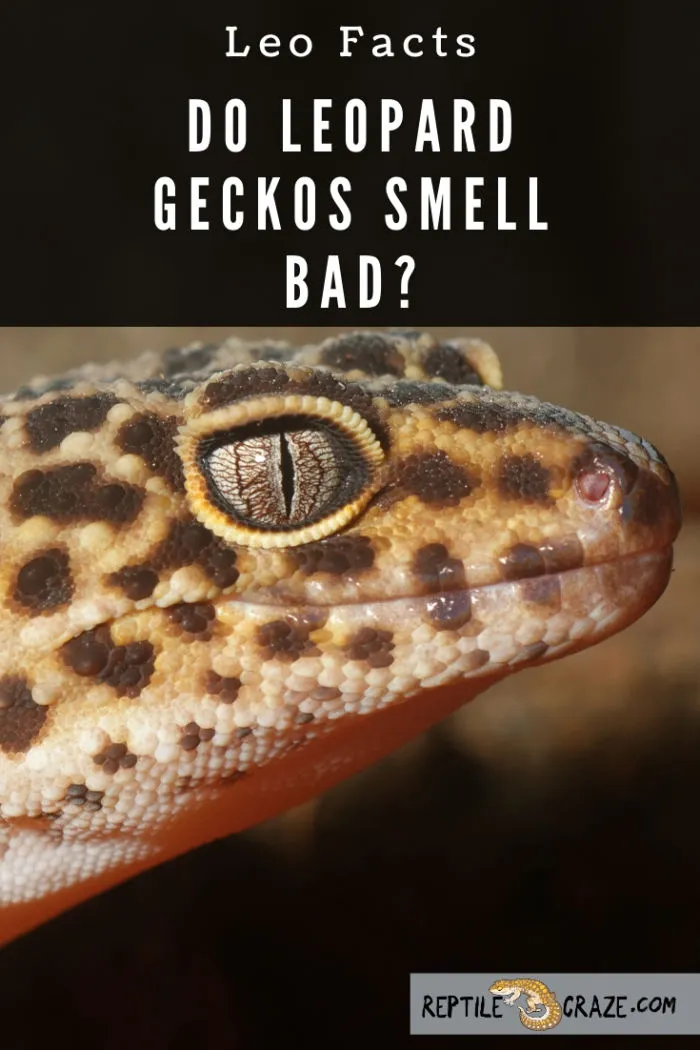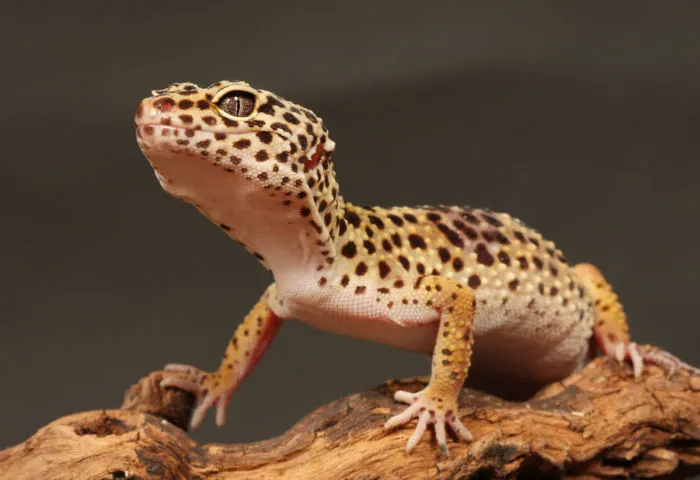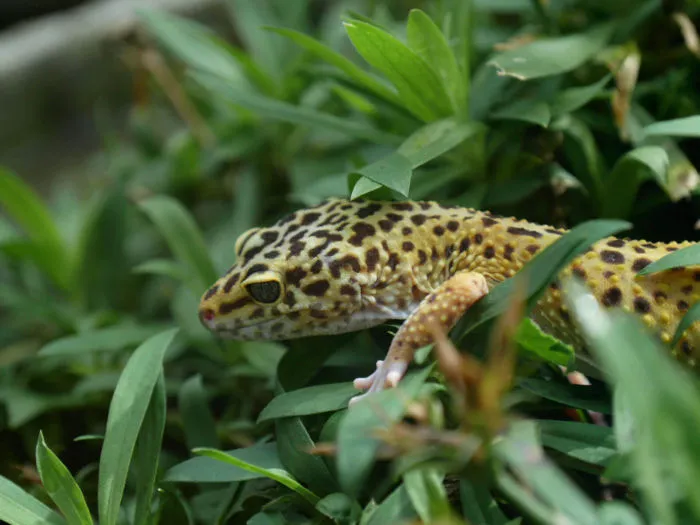 If you have been to a friend’s house, or a zoo, and checked out their reptiles, then you probably didn’t smell a thing! Fast forward to when you brought home your own leopard gecko, and suddenly your whole room smells. Why is this?
If you have been to a friend’s house, or a zoo, and checked out their reptiles, then you probably didn’t smell a thing! Fast forward to when you brought home your own leopard gecko, and suddenly your whole room smells. Why is this?
Usually, Leopard Geckos Are Not Smelly But… Leopard geckos are odor-free, as are most reptiles. What you have to watch out for is their fecal matter. You have to clean your
Now you know what can cause a leopard gecko to be “stinky.” But what can you do as the owner of this reptile to keep things neat and clean and odor-free? Keep on reading to find out.
Table of Contents
The Importance of Cleanliness
The great thing about leopard geckos is that they are great for beginner reptile keepers. They are easy pets to care for and have great little personalities.
One of the major responsibilities you will have as a gecko keeper is to clean the habitat each day by removing debris, feces, and uneaten
Once a month, you will have to perform a deep cleaning on the
You will thoroughly wash and disinfect the habitat and the things inside of it, which will kill harmful bacteria. It is critical to the health and happiness of your leopard gecko.
It All Starts with The Right Habitat
If possible, try to find yourself a habitat that has holes drilled into the top. It helps air circulate and keeps your leo breathing in clean air.
Also, be sure the top stays on and is sturdy. Holes should not be so large that a cat, dog, or small child can reach in and play with or harm the gecko.
One option is to find clear plastic totes and drill holes in the top of it. No matter what you choose, make sure you clean it first before putting a leo inside.
We washed ours with plant-based dish soap, and then rinsed it over and over again until all soap was gone.
Be sure you wash with hot water and then rinse with cold water thoroughly.
Your next step is to disinfect. Use paper towels to dry the habitat, and then make use of a reptile-approved disinfecting agent.
You may also use a solution you make yourself of bleach, but you have to be very careful to ensure the mix you create consists of 90% water and 10% bleach.
Leave your solution or reptile spray on the interior and exterior of the habitat for at least 30 minutes, and then rinse the habitat several times over.

Cleaning and Disinfecting Cage Items
Your leopard gecko’s habitat will have lots of rocks, hides, and other fun objects for the leo to enjoy playing and relaxing on.
Wash them with your organic dish soap, and then spray with your solution or reptile spray. Allow it to sit for at least 30 minutes and rinse them off very thoroughly.
Make sure that all your cage objects are nice and dry before you put them back into the habitat. Any moisture leftover can be a catalyst for diseases and bacteria.
Dry everything off with paper towels, and then leave them out to air-dry for good measure. Once you are sure that everything is dry, put it all together. Put your substrate in first, and then all your habitat objects.
Daily Spot Cleaning
You can keep a leo from smelling funny by spot cleaning their
Begin by making sure you have some disposable rubber gloves. Reptiles are known for carrying bacteria, so have some gloves on hand so you can throw them out right after the task is done.
Salmonella, for instance, is able to be carried by reptiles. Be sure you always wear gloves and wash hands after you are done cleaning.
It’s important to know what to look for when spot cleaning. Much like a dog, a leo loves to go to the bathroom in the same spot.
So, look for the defecation spot. It is usually a corner of the habitat. Sometimes, leos may defecate under or in the objects of their habitat, so look there also.
Use paper towels to take out any feces or waste that you find. It can be
These are usually dry, so it shouldn’t be too hard to clean this out. If you are using paper towels as your substrate, take out the towels in that corner and lay down a new paper towel.
If your leopard gecko is not pooping at all, this can be a pretty bad sign! Read here what that means and what you should do.
Monthly Deep Cleans
Once per month, you will need to put your gecko into a temporary enclosure and get the
As always, make sure you start by wearing your latex gloves. Bacteria are still a concern, so make sure you have these handy when the task happens every month.
Next, make sure your leo gets safely into his temporary enclosure. Do not ever handle him by the tail-let him climb into your hand and place him into the box.
You can use a plastic storage container with holes in the top or a travel reptile carrier for this task. As always, be sure the lid fits tight, and other pets or family members cannot reach inside.
Take ALL the Stuff Out
Remove everything-substrate, habitat objects like rocks, and
Once all the items have been taken out, it is time to clean the habitat. Use your organic dish soap and warm water to clean it out, and rinse it thoroughly, so all suds are gone. Do this with your cage objects also.
Dry them off using paper towels and then allow the items to air dry. You will then make some of that bleach solution or use the reptile spray to coat the objects. Allow it to sit on there for 30 minutes.
Once you have allowed it to sit for 30 minutes, you must rinse it off thoroughly. Use clean water to carefully remove the cleaner or bleach. Leaving any fumes behind could be harmful to the leopard gecko.
Your next step will be to dry everything off. It will eliminate moisture and prevent bacteria from growing. Dry it off with paper towels and let it air dry for good measure.
Now put in some clean substrate and put your items back into the habitat. Lastly, remove the gloves and discard them, and wash your hands thoroughly with soap and water.
You can now place your gecko back into his home.
A Special Note on Carpets
Reptile carpets are great ways to line the habitat. You should clean waste materials and any uneaten
It is also advised that you have a garbage bag with you, such as a disposable plastic shopping bag, so you can throw any fecal matter and uneaten
When it comes to deep cleaning the carpet, which should be done with other cage objects, here’s how to do it.
Begin by laying down a trash bag so you have a workspace so things like your floor won’t get wet.
Next, put the carpet into some hot, soapy water-we use our organic dish soap-and soak it for 15 mins. You may wish to do this outside so you can pull out the carpet and wring it out, or you can wring it out over another bucket.
Lay the carpet down on your garbage bag and scrub it using a bristle brush. (Note-make sure this is a special bristle brush you do not use for anything else in your home. Do not let other family members use it for any purpose other than your reptile).
Dip it in the water again and flip it over, scrubbing the other side.
Now rinse off the carpet and put it on the garbage bag. Get rid of the dirty water in the bucket and rinse the bucket with hot clean water, refilling it. Put the carpet in there and get all the soap suds off.
Spray the carpet with reptile spray or bleach mix, let it sit for 30 minutes, rinse it off thoroughly, and then allow it to air-dry. After, return it to the habitat.
Conclusion
Keeping up with regular cleanings will ensure your reptile doesn’t smell. After all, they are odor free-so long as we help them keep it tidy.
- Enchi Ball Python: A Unique and Stunning Morph of Python regius - March 27, 2025
- Emerald Tree Monitor: The Enigmatic Green Guardian of the Rainforest - March 26, 2025
- The Egyptian Cobra (Naja haje): A Fascinating Serpent - March 25, 2025
